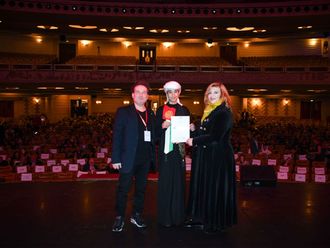
Dubai: Ever felt overwhelmed by work, personal issues, or just life in general? Some might vent with friends, or play a sport. However, there are those who will pay for a private room and sing their heart out in it. We are talking karaoke and the cathartic charm it holds for many East Asian communities.
To give you an idea of how popular karaoke is in countries like Japan, Philippines, South Korea and China – within a few minutes’ walk from Shibuya Station in Tokyo, Japan, you can easily spot about two dozen ‘karaoke boxes’ or outlets. And this holds true for each of these nations.
Gulf News spoke to UAE-based expats from Japan, Korea and China to find out why karaoke has such a lure?
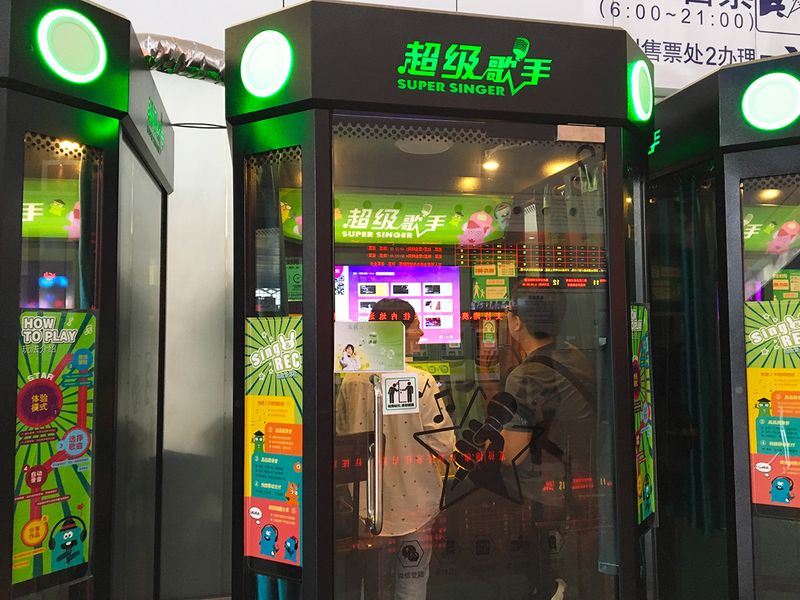
The origin of karaoke
The name ‘karaoke’ already indicates its origin – Japan. ‘Kara’ means ‘empty’, and ‘oke’ is short for ‘orchestra’, in Japanese. So the combination means ‘empty orchestra’, alluding to people singing by themselves without a group of instrumentalists providing music on the spot.
Matt Alt, author of Pure Invention – a book revealing the untold back stories of how Japan became a cultural superpower through inventions including karaoke, wrote that the word was broadly used in the entertainment industry in Japan, even before the birth of the first karaoke machine. It was frequently used to refer to scenarios where instrumental recordings were needed as backing tracks, when a live band was not available for a singer.
He also pointed out that the prototype of karaoke was first invented by Shigeichi Negishi – a Japanese engineer, who ran a consumer electronics assembly firm, in 1967.
Struck by a tease made by his head engineer about his humming to a song, he asked the head engineer if it was possible to hook a microphone up to one of the 8-track tape decks sold in his shop, so he could hear himself singing over a recorded lyric-free song. Replied his head engineer, “Piece of cake, boss.”
According to Alt, shortly after that, the first karaoke machine, which Negishi called ‘Sparko Box’, was born. With just a tape deck, an amplifier, a speaker and a microphone, it enabled ordinary people to not only do sing-alongs, but also hear their voices simultaneously. However, ‘Sparko Box’ didn’t get wide-spread attention in the market, due to distribution troubles.
Then came Daisuke Inoue – a Japanese musician and businessman, who independently invented his own karaoke machine in the city of Kobe, according to a magazine article by Pico Iyer, a British essayist, in Time 100 – Asians of the Century: A tale of Titans. Alt also mentioned in his book that Inoue called his machine ‘8 Juke’. The difference between ‘8 Juke’ and ‘Sparko Box’ was that it made singing easier for amateurs – Inoue incorporated methods such as recording songs in separate keys, so that people with different tone levels could sing easily. ‘8 Juke’ sparked interest among audiences successfully, after Inoue hired hostesses to sing, using them at outlets. From there, such karaoke machines spread throughout Kobe, and then all of Japan.
Over the course of the 1970s, karaoke was performed mainly in clubs in front of other patrons, but in the 1980s, a more private style called ‘karaoke box’ with private rooms emerged and became the dominant form of karaoke in Japan. This type later spread to countries such as Korea, China and the Philippines, as per online news reports.
However, neither Negishi nor Inoue patented their inventions. A BBC article written by Suemedha Sood in 2011 stated that Roberto del Rosario, who is from the Philippines, developed and patented a karaoke sing-along system in 1975, and is the sole holder of a patent for a karaoke system worldwide.
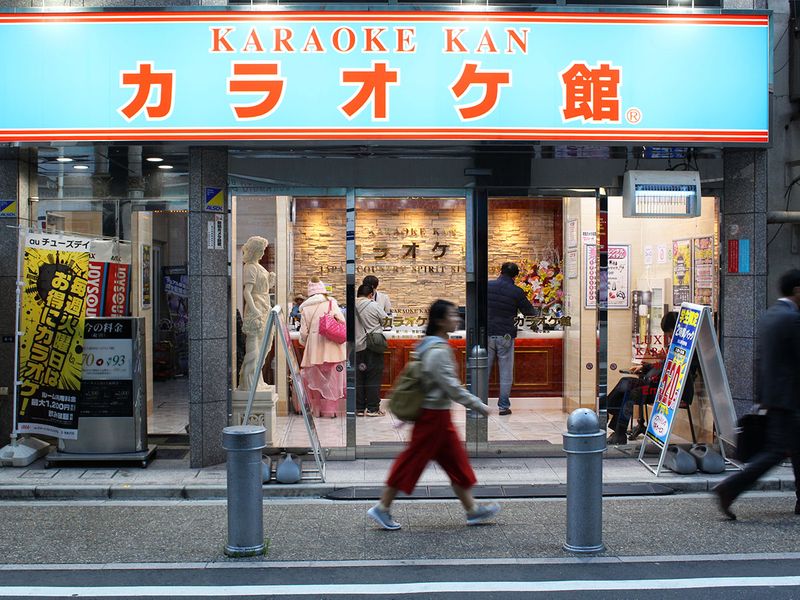
What does a karaoke place look like?
After getting to know the brief history of karaoke, you might be curious about how it looks like.
Well, it typically consists of many private rooms in various sizes.
Why the varied sizes? Because people usually enjoy karaoke in small or big groups. A classic karaoke room can host a group size ranging anywhere between two to dozens of people.
Inside the room, you can expect to see one or multiple table(s), mostly in the middle, surrounded by sofas. A television monitor is placed in the front centre of the room, and undoubtedly, microphones are laying around on surfaces for you to grab and sing songs with. You will also have a machine - be it a touch-screen or hand controller, where you can pick your songs to sing. The lyrics of your chosen songs will be displayed on the monitor, generally with music videos. However, the music itself is lyric-free.
A classic karaoke room would also have no sunlight, but only dimmed artificial lights – they can be club-like colourful, but dimmed regardless, so it is a safe space for you to let loose.
You will be charged hourly, but more often than not, you get so into it, one hour is not enough. If you end up staying for half a day, or even a whole day – people can order food and drinks to the room.
The South Korean trend

Underground karaoke
Karaoke is called ‘noraebang’ in Korean, with the literal meaning of ‘a song room’. According to 36-year-old Joice Shim, director of a Korean tour agency in Dubai, Korean karaoke has undergone significant changes.
“About 10 years ago, in my generation, we would go underground to a karaoke to sing. These karaoke bars usually had 8 to 10 rooms, hosting groups sized four to ten,” Shim recalled. “I remember those dimmed lights and the sort of exciting mood they set in a dark room. Although uncertain why most karaoke bars were underground back then, I noticed that in the past decade, above-ground karaoke slowly became mainstream.
“The past, perhaps five years, have witnessed the spring up of some new karaoke types. A couple of them really caught my eye – coin karaoke and female karaoke.”
Coin karaoke
Coin karaoke, which are telephone-booth sized, can hold a maximum of two people within. You get to sing songs by inserting coins into a machine inside the booth. “Beverages might be allowed, but food is usually prohibited in them. They are mainly cheaper than regular karaoke bars, and can be spotted on the side of the street. Normally, passersby can’t hear what’s happening inside, so you can sing your heart out, or shout if you want,” Shim said with a laugh.
Female karaoke
From what Shim described, female karaoke places in South Korea are challenging the way a traditional karaoke is ‘supposed’ to look like. Different from party-house-like karaoke rooms, they allow warm and soft lighting, which radiates a cozy and comforting energy to attendees. “These karaoke rooms has an increasing popularity among female groups in South Korea. They gather together to party, gossip and have fun.”
Karaoke at home
Nowadays, the karaoke scene is even shifted to one’s own home in South Korea. “You can use your home internet to select songs without lyrics on the web, then use blue tooth microphone to sing at home,” Shim added.
The Japanese journey
Themed karaoke
“Karaoke bars are called ‘karaoke boxes’ in Japan,” said Natsumi Miyakane, a Japanese national working and living in the UAE.
The 38-year-old expat explained, “In Japan, karaoke boxes sometimes can take up a whole floor, or even a small building. One floor typically has five to six rooms - small ones are for a group of two to three, and big ones such as ‘party rooms’ can fit 15 to 20 people.
“These karaoke boxes are often themed and have different looks. For example, logically, a ‘party room’ is decorated for people to party. So, the space is dreamy, and the lights are often flashy. ‘Family room’ has a dedicated playing space for kids. It’s fluffy and more colourful to the eye.”
Miyakane also mentioned that to enter the family room, you will need to take off your shoes first.
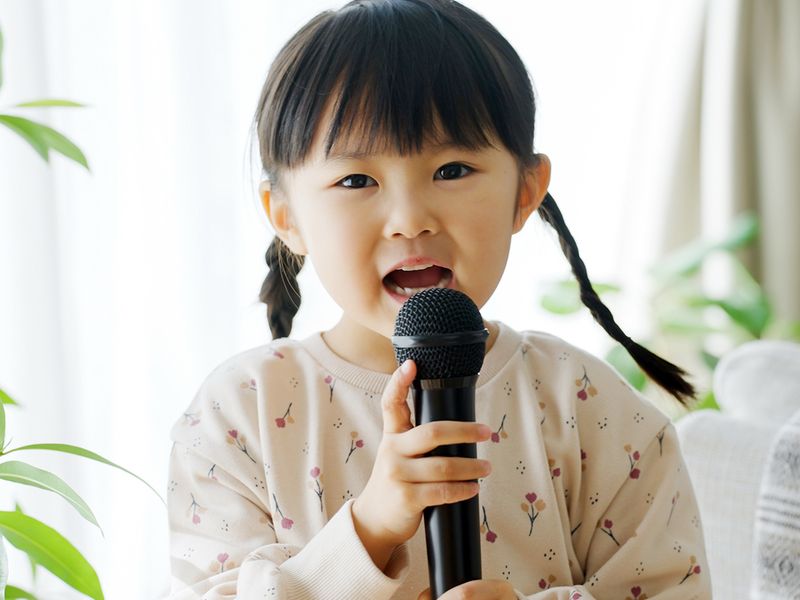
Hitokara
“Around 5 to 6 years ago, ‘hitokara’ made its appearance. ‘Hito’ means one person, so ‘hitokara’ is a one-person karaoke,” she added.
Unlike coin karaoke on the street in South Korea, “They are usually inside a building, lined up in a capsule hotel fashion.”
Combined karaoke
“Some karaoke are also combined with other entertainment activities, under one roof. For instance, you can sing karaoke in a Manga café, and a game-house providing darts and pool. One can spend a whole day inside one of these facilities, easily, hopping from one entertainment to another.”
Karaoke for work and study
During Covid-19, an unexpected usage of karaoke boxes caught Miyakane’s attention – they were provided to businessmen and students.
“At the height of the Covid-19 pandemic and even after that, karaoke owners couldn’t get any customers, due to the public fear of confined spaces. As a result, they had to think about other ways to make use of the empty karaoke rooms. So they opened doors to businessmen and students, providing rooms for them to study or host business meetings.
“Meanwhile, these customers also grew fond of karaoke rooms, for the privacy and quietness. Apparently, this has become a fashionable usage of karaoke rooms these days.”
Karaoke at home, however unpopular
When asked whether singing karaoke at home is an option in Japan, Miyakane responded, “Singing at home with, for example, the karaoke program (Let’s sing) on Nintendo Switch is available, too. However, hardly anyone in Japan uses this amenity, because we worry that the singing voice would disturb our neighbors.”
China and ‘Guanxi’
Karaoke is called ‘KTV’ in China, meaning ‘karaoke TV’, modeled after MTV (movie TV) at its peak. Similar to the karaoke trends in Japan and South Korea, China’s KTV also includes the regular version, the themed version, as well as KTV booths for one person, which can be seen in malls.
“Home KTV is also an option, however, most people still choose to go out to sing, because in China, socialising is one of the main reasons why people go to KTVs – singing at home doesn’t fulfill this purpose,” Cynthia Zhou, a 33-year-old Chinese expat, currently working and living in Dubai explained.
Karaoke in cars
Perhaps the most unique form of karaoke in China is karaoke in cars.
Chinese automobile maker Geely gained much media attention in 2003, when it introduced its ‘Beauty Leopard’ car model with a built-in karaoke machine. It enables passengers in the car to sing in a moving vehicle, providing a display screen, a microphone, a selectable song list and a stereophonic sound system.
Why is karaoke popular in these countries?
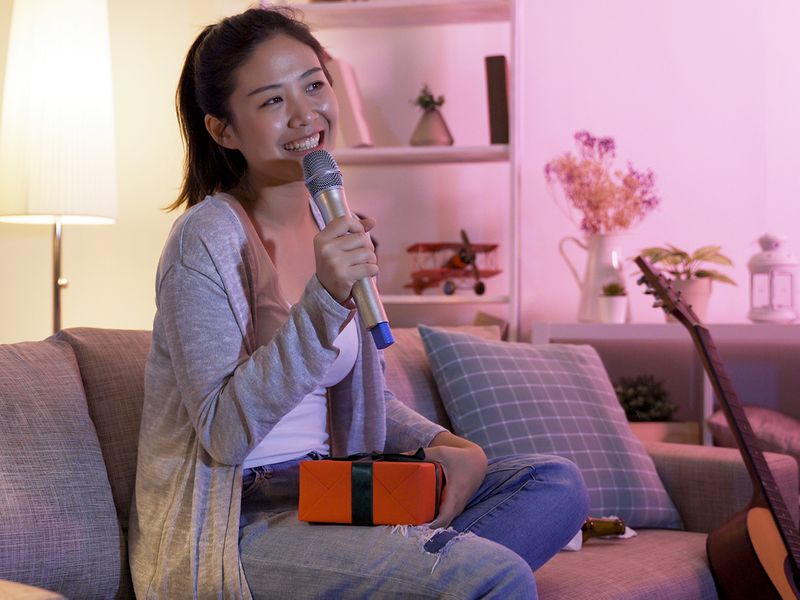
Collectivism versus individualism
The term ‘social event’ appeared in all interviewees’ answers. Social networks that facilitate business and other dealings, is called ‘guanxi’ in Mandarin. “Guanxi has tremendous value in China,” Zhou pointed out, “People like to work together to achieve a common goal, and karaoke offers just the right platform to build relationships – it’s playful, personal and relaxing, as opposed to a rigid and serious business environment. People tend to let down their guard and get to know each other better in a karaoke bar, and that’s why they are often crowded with team-building and business gatherings after work hours.”

Guanxi has ... value in China. People like to work together to achieve a common goal, and karaoke offers just the right platform to build relationships – it’s playful, personal and relaxing, as opposed to a rigid and serious business environment
Shim echoed this sentiment, “My colleagues and I often went to karaoke bars to relax after work, back in the days when I was in South Korea. Sometimes, it felt like an extended work event for me, but it was hard to say no, because everyone else was going, so I felt the pressure to go too. Mainly because we as Koreans, focus on unity. While, I imagine in a society advocating individualism, individuals might not have been interested in such off-work gatherings – they might consider these events an intrusion into their private life, or it might have been a natural thing for them to refuse to go to such gatherings, if they didn’t want to go. However, younger generation Koreans tend to be more outspoken.
“Being in management myself, I noticed that my junior team members will say ‘no’ to some company gatherings. Meanwhile, I listen to them, because I don’t want to be a ‘kkondae’ (an expression used in South Korea to describe a condescending person).”
Shim thinks that South Korea’s economic growth contributed to the shift in attitude, “In the past, South Korea was not as wealthy as now, people worked hard for a better life, and because work provided a safety net for us, we didn’t want to risk losing it by refusing to go to such occasions. People needed to work together to deliver results.

I noticed that my junior team members will say ‘no’ to some company gatherings. Meanwhile, I listen to them, because I don’t want to be a ‘kkondae’ (an expression used in South Korea to describe a condescending person).
“But nowadays, South Korea is one of the developed countries in the world. The younger generation … it worries less about money and a decent life. Plus, they have more choices to earn money independently – investing in tech companies, being an influencer and even playing games… makes them more bold and expressive.”
‘We are more introverted’
Another common answer that kept popping up during the interviews, was, “We are shyer, in terms of expressing ourselves.” To explain it further - this ‘shyness’ in voicing their opinions in East Asian societies, potentially leads to more pressure and stress within and needs to be released in an ‘appropriate’ place, like karaoke.
People from some nations might feel more comfortable to say things directly to one another. However, in Japan, we tend to be reluctant when it comes to this – perhaps because we don’t want to be the one that stands out, we want to be considered in a ‘normal’ range.
“People from some nations might feel more comfortable to say things directly to one another. However, in Japan, we tend to be reluctant when it comes to this – perhaps because we don’t want to be the one that stands out, we want to be considered in a ‘normal’ range. Japan is a highly organised and disciplined society, we were taught from a very young age, to be tidy and mindful of others and our surroundings. Cooperation is more important than personality.”
Miyakane explained that there is immense pressure that builds up within because of this level of self-discipline, and this may have promoted the concept of karaoke in Japan – it offers a ‘reasonable’ space for people to let go, free of judgement.
Zhou offered her insight, “Places like dancing clubs, might be the norm in some other countries, but to most Chinese, karaoke is a gentler and preferred way to let go of stress.
“The sort of isolation that karaoke rooms create, encourages us to ‘be ourselves’ and be sentimental. I know for a fact that, many young couples go to karaoke places to boost their relationship, because they tend to talk about their love more easily in these places.”
Shim further strengthened the idea, “People from other nations, might already manifest their emotions openly in daily lives, for example, they would say ‘I love you’ to their loved ones often. For Koreans, at least for my generation, it was less common of a gesture.”
Economic growth
The past seven decades have seen substantial economic growth in countries such as Japan, South Korea and China – this has definitely increased people’s interest in karaoke.
In American psychologist Abraham Maslow’s 1943 paper ‘A Theory of Human Motivation’, he proposed the idea of ‘hierarchy of needs’, which has been commonly referred to as ‘Maslow’s hierarchy of needs’ later on. Maslow believes that individuals will only seek emotional and spiritual needs, after their material and physical needs are met – and this has been the case in the world of karaoke.
With more money in hand, an increasing number of people in these economies have long gone past the basic needs on Maslow’s pyramid, such as food and shelter.
“Nobody would have dreamed about going to karaoke in the 1950s, but over the years, more and more Chinese people are getting wealthier – they can spend. So, when karaoke was introduced in China, it immediately became one of people’s favourite places to go to,” said Zhou.
Meantile, seeing people’s admiration of karaoke, investors flocked setting up more places, making it affordable and easily accessible to the general public. Nowadays, almost everyone can afford to go to karaoke in these countries.
“Many of these karaoke bars were also upgrading themselves to more luxury interiors and upscale food and beverages, so they can attract customers with high purchasing power,” she added.
“Additionally, with rapid economy growth, comes more social pressure for people, to compete with each other for a better future. China has a large population base – this makes the competition even more severe. Thus, creating a greater need to go to karaoke to release the ascending anxiety - another reason for the popularity of karaoke,” Zhou concluded.
The love of karaoke has spread via expat East Asian communities to the shores of Dubai too.
Lydia Yoo, who is part of the management of the Dubai-based Kung Korean restaurant and daughter of the founder, said, “I will tell you why we started a karaoke restaurant in the UAE – my father came to the UAE decades ago, and established a construction company here. He had many clients from Korea and realised that his Korean clients were looking for some entertainment activities that were popular back home – such as karaoke. However, there weren’t many options out there for them. So, about 10 years’ ago, my father started this Korean karaoke restaurant, initially to entertain his very own clients. However, over the years, it grew popular among other nationalities, too.”
Our customers are multinational nowadays - they come to our place looking for a good time, a relaxing time and even some quality time with friends and families, other than singing. We’ve hosted birthday parties, farewell parties, company gatherings … karaoke makes our customers happy. Plus our karaoke rooms are private, so they are a safe place for people to release stress
Aloki Batra, CEO of Five hospitality, which owns the Maiden Shanghai karaoke restaurant, in Dubai, said, “Karaoke rooms are a stand out entertainment experience for people to have fun, meanwhile we pride ourselves on providing guests with immersive entertainment experiences - this is the reason why we offer karaoke in our Maiden Shanghai restaurant.”
“Our customers are multinational nowadays - they come to our place looking for a good time, a relaxing time and even some quality time with friends and families, other than singing. We’ve hosted birthday parties, farewell parties, company gatherings … karaoke makes our customers happy. Plus our karaoke rooms are private, so they are a safe place for people to release stress,” Yoo added.
She thinks that karaoke is therapeutic for her customers.
“First of all, people from some East Asian countries such as Korea and China, are coming to our karaoke restaurant, because this is what they are familiar with back home.
“However, we have customers with other backgrounds coming, too – some of them have been to karaoke bars in countries like Korea and China before and they liked it. So naturally they want to try karaoke in the UAE as well. Besides, Compared to other forms of entertainment activities, karaoke stands out – it’s a unique experience, and so when people search for fun things to do in the UAE, they may discover and be drawn to it.
Karaoke presents an excellent, enjoyment-filled opportunity for a group of friends to gather together over a common love of music, and that’s what attracts our guests
“Another reason is that karaoke may make people feel at home, and comfortable. I’ve seen many happy faces coming out of our karaoke rooms – they don’t have to pretend in a karaoke room, they can turn their daily frustration into lyrics to sing out, and that’ s therapeutic.”
A common sentiment seems to be that karaoke allows people to break free from daily norms and release their inner emotions through song.

Dubai is well-known for its vibrant entertainment hub – karaoke is a special form of entertainment. Such karaoke social activities amongst friends create memories. They provide a great bonding experience between people, through means of singing and dancing. Customers come to get entertained, and by singing their favourite songs, they can feel nostalgic, too. These, I believe are the reasons…
“Dubai is well-known for its vibrant entertainment hub – karaoke is a special form of entertainment. Such karaoke social activities amongst friends create memories. They provide a great bonding experience between people, through means of singing and dancing. Customers come to get entertained, and by singing their favourite songs, they can feel nostalgic, too. These, I believe are the reasons…,” said Nicholas Lancy Menezes, assistant marketing manager of Lucky Voice, a Dubai-based karaoke bar.
Batra concluded, “Karaoke presents an excellent, enjoyment-filled opportunity for a group of friends to gather together over a common love of music, and that’s what attracts our guests.”
Share your favourite karaoke memory with us at readers@gulfnews.com
Note: The story was first published in May 2023.






